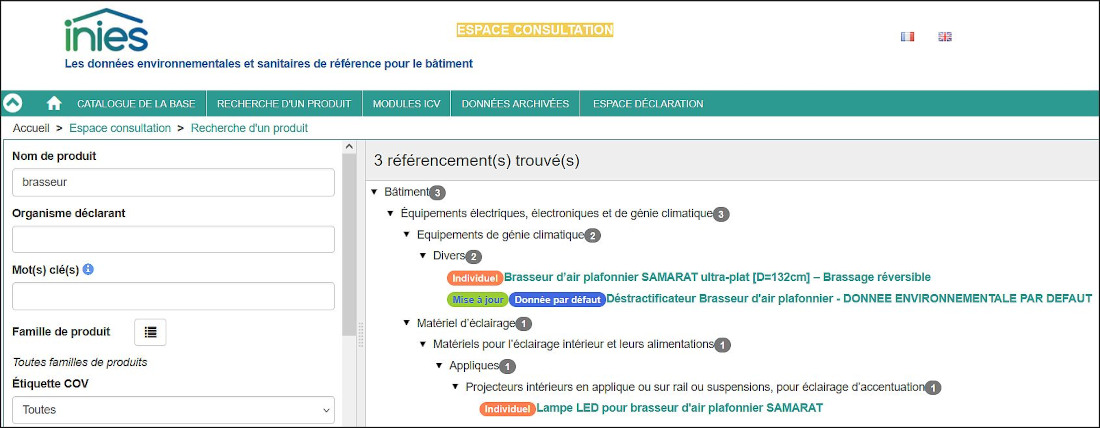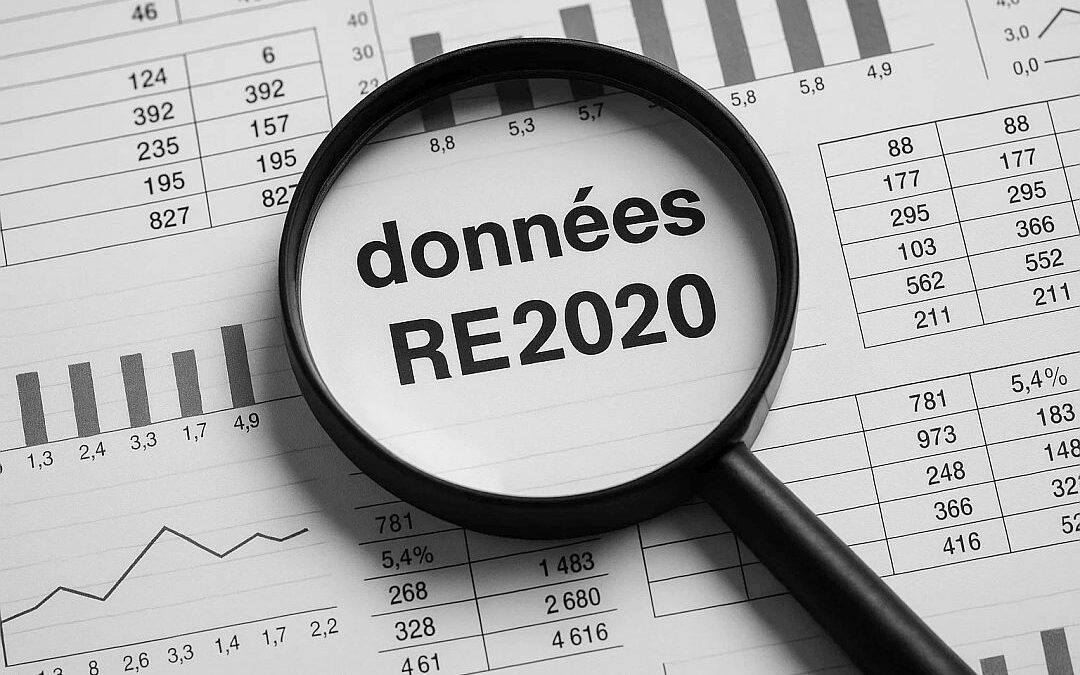The majority of the information made available to designers by manufacturers and distributors of thermal systems is reliable and well-documented.
However, some exceptions remain: occasionally, data communicated by a few market players may include inaccuracies.
In practice, these discrepancies often lead to more favourable RE2020 results, both in energy and environmental terms. Nevertheless, such inaccuracies are detrimental to architects and engineering offices, whose technical vigilance ensures that project owners receive rigorous and compliant work.
To prevent any risk of dispute, here is a simple reminder to check the reliability of data in just a few seconds.
1. PEP Sheets
The only valid PEP sheets are those available online in the INIES database.
Thus, for ceiling fans, simply type the keyword “brasseur” on this page. You will then see all available PEP sheets appear.
As of October 17, 2025, this is what the page looks like:

Of course, other products will appear in the future, but they must be listed in this database.
Any PEP sheet that is accessible, for example, on a distributor’s website but not visible on INIES, should be treated with caution.
2. Certified Values
To the best of our knowledge, and as of today, the only organization that issues certifications in our field is Certita-Eurovent. However, the reference standard for ceiling fans (BAP) has not been produced by this body, as can be verified in the list available here: https://www.eurovent-certification.com/fr/third-party-certification/certification-programmes.
Only air handling unit (AHU) fans have been the subject of a certification standard, but ceiling fans have not.
It should also be noted that certification costs are very high. Given the low unit margins achieved on ceiling fans, obtaining certification for this product range remains unlikely for now.
Therefore, any claim suggesting that a ceiling fan is certified should be viewed with skepticism. Consequently, proof of certification must be required by designers.
3. Verified Values
Verified data must come from a test carried out by an independent laboratory accredited according to the NF EN ISO/IEC 17025 standard by COFRAC or any other equivalent accreditation body[i].
Since the vast majority of ceiling fans are manufactured in China, the accreditation of local testing bodies is issued by CNAS, the Chinese counterpart of COFRAC.
In the test report we provide upon request to our partners, the testing body is clearly identified and is indeed accredited by CNAS.
The verification of the testing laboratory’s accreditation by CNAS is accessible here.
For laboratories located elsewhere in the world, other international accreditation bodies are listed below:
- ILAC: https://ilac.org/signatory-search/?q=n&id1xx=0&id2xx=0&id3xx=0&id4xx=0&pagenum=4
- IAS: https://www.iasonline.org/?post_type=ias_certificate&orderby=org&order=ASC&s=&global=1&service=0&keyword=norteck&number=&org=&city=&state=&country=&zip=&status=
- ANAB: https://search.anab.org
Therefore, values derived from testing laboratories that are not accredited must be considered as declared values.
4. Update of Your Standard CCTP Clauses
To enable all field actors (installers, inspection offices, etc.) to properly carry out their tasks, we have updated our standard CCTP clause on the Samarat platform to take these vigilance points into account. You can find it in your Professional Space.
5. Any Other Questions?
If you identify elements that raise questions, please write to us at: pros@exhale-europe.com.
[i] See paragraph 2.4.1 of Annex II of the “Th-BCE 2020 Method” (Decree of August 4, 2021): https://rt-re-batiment.developpement-durable.gouv.fr/IMG/pdf/annexeii_arrete_4_aout_2021.pdf?
“`


